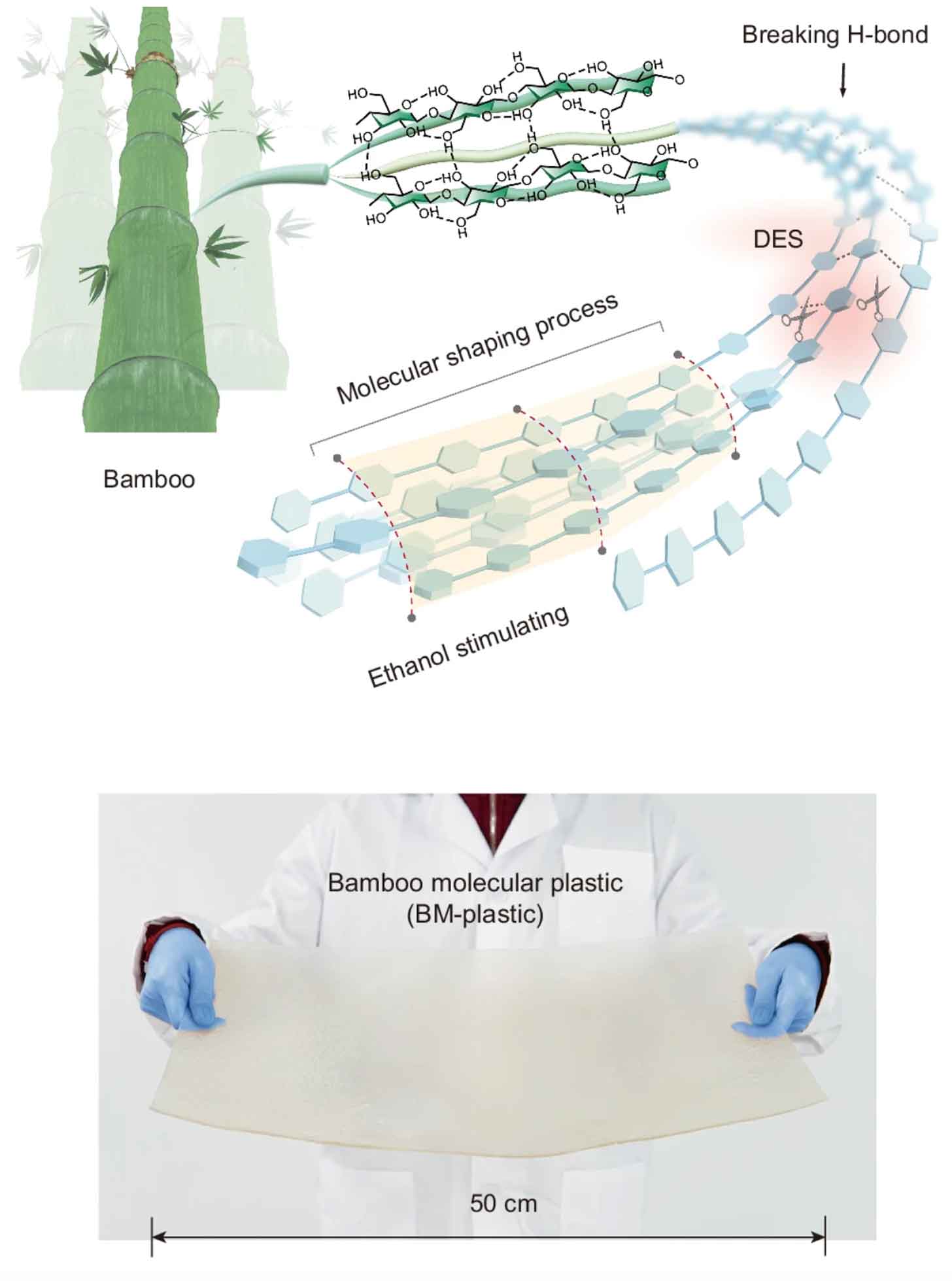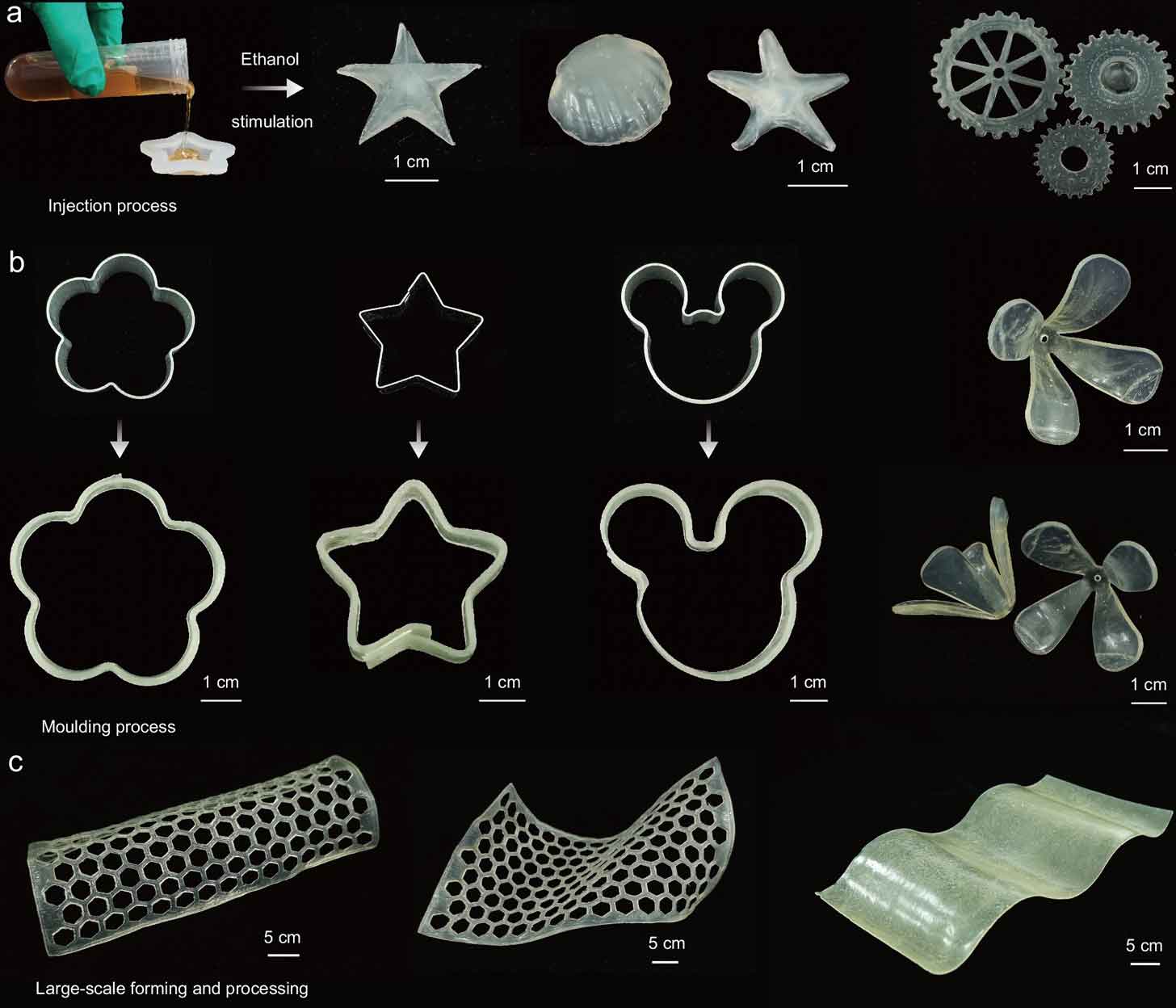Plastic has become such a ubiquitous material in our daily lives because, up until recently, there hasn’t really been anything like it. It’s strong and durable, relatively cheap to make, and easy to shape into almost anything.
The downside? It is wreaking havoc on the planet.
Made with fossil fuels, oil-based plastics not only have a large environmental footprint in their assembly, but also take decades — or even centuries — to decompose once thrown out.
Plus, as they slowly break down, they can release harmful microplastics and toxic chemicals into the air and waterways.
It’s no wonder, then, that researchers around the globe have been working on ways to create “bioplastics,” or plastic-like materials made out of biodegradable components.

Researchers at China’s Northeast Forestry University and Shenyang University of Chemical Technology think they may have cracked the case on bamboo plastic.
A recent study, published in “Nature,” details how researchers have developed a type of strong, biodegradable plastic from bamboo that resembles oil-based plastics in both strength and shapeability.
The material can reportedly biodegrade in soil within just 50 days — which is no time at all compared to traditional plastics.
“Bamboo’s rapid growth makes it a highly renewable resource, providing a sustainable alternative to traditional timber sources,” Dawei Zhao, one of the study’s authors, told New Scientist.
“But its current applications are still largely limited to more traditional woven products.”

Haipeng Yu, Zhao, and other researchers studied the plastic-like application of bamboo by developing a non-toxic alcohol solvent base to dissolve bamboo cellulose down to a molecular level. From there, they directed those cellulose molecules to reassemble into a tough plastic material.
In this process, the cellulose is chemically modified and forms a strong molecular network, creating the durability traditional plastics are known for.
The bamboo bioplastic was tested against several other types of commercial plastics, and it matched or outperformed them in nearly every way.
The bamboo version displayed a tensile strength of 110 megapascals. That means it could withstand more pressure than traditional plastics and existing bioplastics.
Researchers also found that the bamboo alternative matched or outperformed traditional plastics in tests of mechanical and thermal stability and shapeability, meaning it could even be used in industrial contexts.

Because of its strength, the bamboo bioplastic does not offer too much flexibility, but it still has potential to be used in engineering plastics or other similar high-pressure applications.
While the bamboo material isn’t as cheap as some of the world’s most commonly used plastics, researchers found that it can be completely recycled while maintaining 90% of its original strength, meaning it can likely be reused repeatedly.
And, when it reaches the end of its life, the “plastic” would take just days to decompose.
“This work establishes a method for transforming abundant bamboo cellulose into high-performance, eco-friendly materials,” they write in their research, “offering a viable pathway to mitigate plastic pollution and fossil resource dependence.”
You may also like: New 'bioplastic' degrades in water faster than paper — and could replace Styrofoam, other single-use plastics



